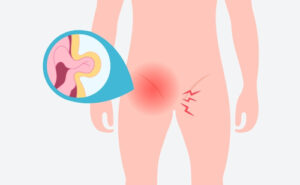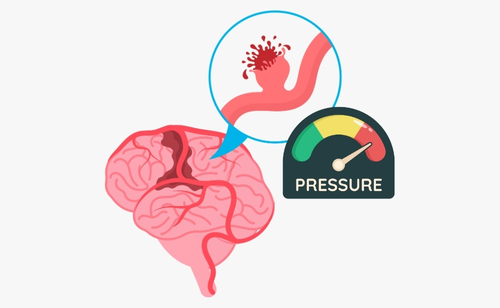
High blood pressure (hypertension) is the leading cause of stroke in New Zealand, yet many people don’t know they have it. Each year, around 9,000 New Zealanders experience a stroke. It is estimated that 80-90% of these could be preventable primarily though controlling key risk factors like hypertension. Understanding the relationship between hypertension and stroke, how to manage hypertension and how to spot the signs of stroke is important for all Kiwis to protect their health and the health of their loved ones.

Hypertension is known by most people as high blood pressure. This medical condition is where the pressure in your bodies arteries is consistently too high. Blood pressure is the measure of the force your blood pushes against your artery or blood vessel walls – it’s measured in millimetres of mercury (mm Hg).
Over time this extra pressure puts strain on your heart and blood vessels, increasing the risk of serious heart problems. If left untreated, elevated blood pressure significantly increases the risk of heart attack, stroke and other serious health problems.
To identify high blood pressure the best practice is to get your blood pressure checked regularly.
A blood pressure measurement has two numbers. Systolic (top number), which is the pressure when your heart pumps, and Diastolic (bottom number) which is the pressure between beats. There are four general categories of blood pressure:
Normal (ideal) blood pressure: <120 and <80 mm Hg
Elevated / Pre-hypertension: 120-129 and <80 mm Hg
Hypertension (stage 1): 130-139 or 80-89 mm Hg
Hypertension (stage 2): 140+ or 90+ mm Hg
High blood pressure is one of the most common health conditions in New Zealand, with roughly one fifth of New Zealanders having high blood pressure.
Many Kiwis who don’t actively monitor their blood pressure are unaware they have high blood pressure and are at a higher risk of serious health conditions like stroke – for which high blood pressure is the biggest risk factor.
A stroke occurs when the blood supply to part of the brain is interrupted or reduced. This interruption to blood supply causes the brain cells to die. There are two primary types of strokes:
Ischaemic stroke
Pronounced “iss-key-muhk”, this is the most common type of stroke. It occurs when blood supply to part of your brain is blocked by fatty deposits, blood clots or other debris. There are two types of ischemic strokes:
Haemorrhagic Stroke
A haemorrhagic stroke happens when a weakened blood vessel leaks or bursts, causing bleeding into the brain. A “haemorrhage” is the term for bleeding inside your body. This disruption to the normal blood flow in your brain will prevent it from getting the bood and oxygen it needs to survive. The pressure from the bleeding can also damage or kill brain cells.
Both ischaemic and haemorrhagic strokes are medical emergencies. It’s critical to get medical assistance and treatment as soon as possible, this can reduce brain damage and other complications. Learning the symptoms of a stroke could make a significant difference in someones recovery.
The F.A.S.T. acronym can be used to test for the common signs of a stroke.
Face. Ask the person to smile. Does one side of the face droop?
Arms. Ask the person to raise both arms and keep them up. Is one arm unable to rise? Or does one arm drift downward?
Speech. Speak with the person. Is their speech slurred or different from usual? Are they difficult to understand?
Take action. If you see any of these signs, and/or suspect a stroke call 111 for emergency medical help right away.
Hypertension (high blood pressure) is the leading risk factor for strokes. It is a factor in about half of all strokes. When your blood pressure is high for extended periods of time it puts continuous strain on your arteries and blood vessels. The damage caused by high blood pressure increases your risk of both ischaemic stroke (caused by clots) and haemorrhagic stroke (caused by bleeding).
High blood pressure can lead to a stroke in several ways. It causes damage to blood vessels and increases the risk of an ischaemic stroke due to:
The damage it causes to blood vessels inside the brain also increases the risk of haemorrhagic stroke through:
Because it is the biggest risk factor in strokes reducing high blood pressure is critical to reducing your risk of having a stroke. Even small reductions in blood pressure can make a big difference. Here’s some of the key information relating to preventing or managing high blood pressure:
Regular BP checks at home:
Hypertension is often called the silent killer due to it often being symptomless, that means regular blood pressure checks are critically important. Home blood pressure monitors are a powerful tool that allows you to check frequently and make sure your lifestyle changes and/or medicines are working. You should still get your blood pressure measured with a healthcare provider regularly.
Take your medications properly:
If you are diagnosed with hypertension, your doctors may prescribe medicines to help control it. These medicines will not “cure” the condition and usually need to be taken daily for life – unless lifestyle changes/weight loss is enough to return your blood pressure to normal.
Even if you’re feeling fine you should never cut back or quit taking your medication. Always consult your healthcare professional first.
A stroke is a medical emergency. As we covered earlier in the article, recognizing the symptoms quickly is important – think F.A.S.T.
If you suspect someone may be having stroke think F.A.S.T – Face, Arm, Speech, Time/Take action and call 111 immediately.
New 2024 Stroke Prevention Guidelines – ZOOM Pharmacy
What are the 5 warning signs of a stroke? – ZOOM Pharmacy
First Aid Guides Stroke (external link) – St John
What is a stroke? (external link) – Stroke Aotearoa New Zealand
F.A.S.T Recognising the signs of stroke (external link) – Stroke Aotearoa New Zealand
Stroke (external link) – Healthify NZ
Written by Paul Taylor
Paul Taylor is a New Zealand–based healthcare content writer with 5+ years’ experience creating patient friendly articles for online pharmacies and health platforms. He specialises in accessible condition guides, prescription FAQs, OTC advice, and health & wellbeing tips, translating complex medicines or health condition information into clear, actionable content. Paul collaborates with the ZOOM Pharmacy clinical team and bases every article on authoritative sources, peer reviewed journals and national clinical guidelines to ensure evidence based, up to date content. His goal is to help readers feel empowered to make informed decisions about their medicines and wellbeing. This content is general information only and does not replace professional medical advice.